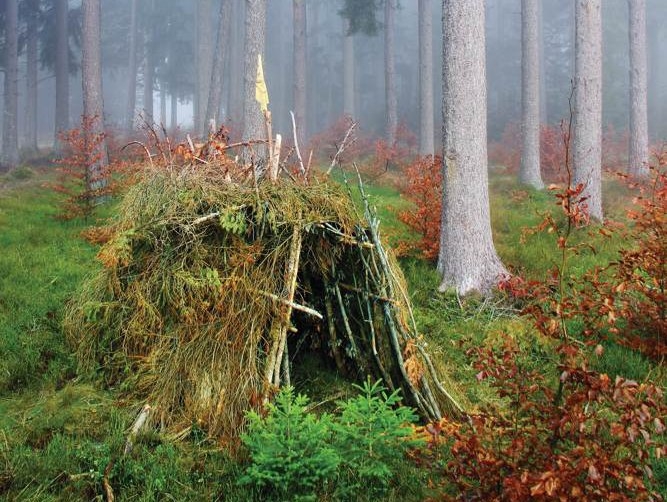- Details
- Written by: Mike Walker
Location, location
Hollow trees, caves or rock overhangs will take most of the work out of building a shelter from the wind and rain. Even a big, densely leaved tree will protect you from the brunt of a downpour and heavy frosts. Beware of dry riverbeds or gullies, which can quickly refill with flood water.
Frame it!
For a proper shelter you’ll want more than just a hole to crawl into. If there are trees nearby then you’re in luck, as you can build yourself a wooden A-frame shelter using branches for the frame and lashing it together with strips of bark, vines or ivy.
Get a backbone
Start by finding one long, straight branch for the ‘backbone’ of the frame. This needs to be fairly sturdy, as it has to support the sides. Lay one end on the ground and support the other in the nook of two support branches, which will form the entrance to your shelter.
Raise the roof
If you’re in a hurry then simply lean branches onto the backbone on each side at an angle. For extra strength weave bendy sapling branches between the branch ‘ribs’ on both sides of your shelter and then fill in the gaps with leafy twigs and any other foliage available, stacking from the bottom up, to help the water run off.
Floor it!
Don’t sleep directly on the ground – if cold it will literally drain away your body heat, and if you’re in the jungle it’s where all the creepy crawlies and snakes roam. Pine needles, dry leaves, or other foliage can make floor insulation. In the jungle get your bed off the floor altogether by making a ladder-like cot supported by sticks stuck in the ground.


